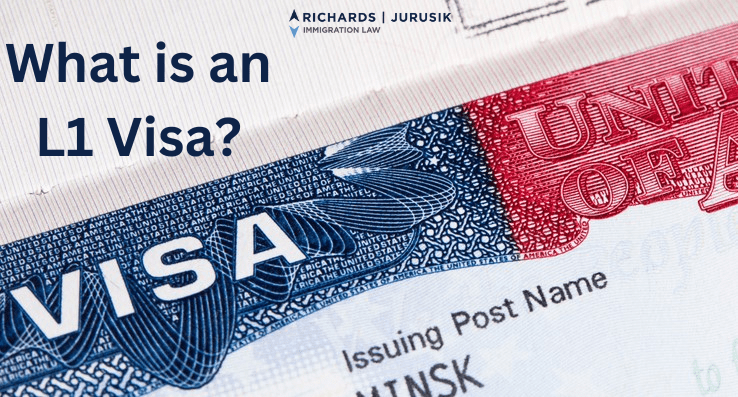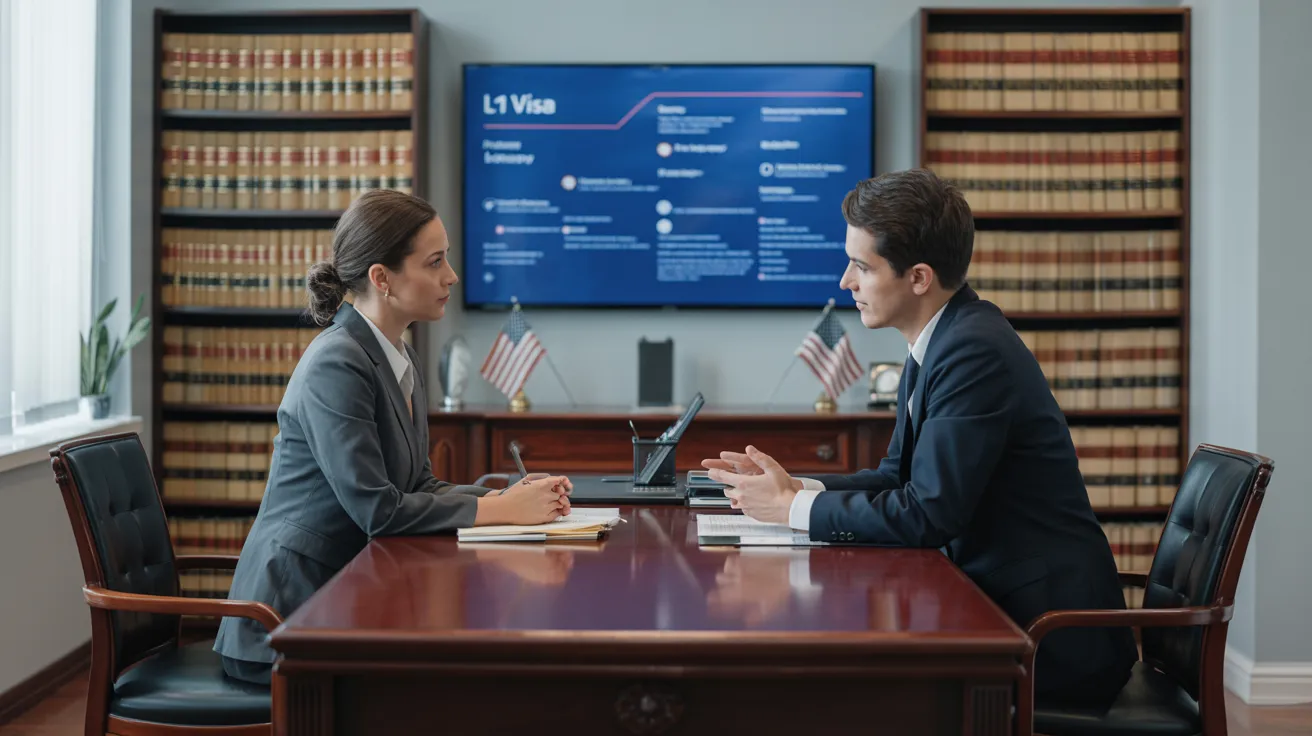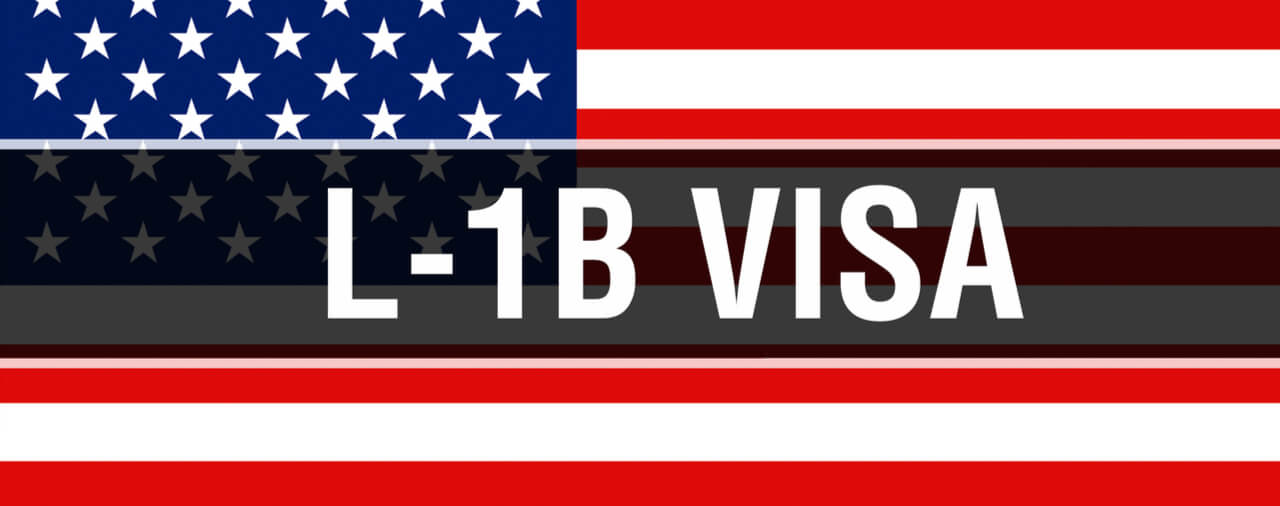Opening Opportunities: A Comprehensive Overview to the L1 Visa Process
The L1 visa procedure presents a vital pathway for multinational companies seeking to transfer crucial employees across boundaries. Understanding the nuances of qualification requirements, the distinctions in between L-1A and L-1B visas, and the ins and outs of the application procedure can substantially impact an applicant's success. Steering this complicated landscape is not without its obstacles, and mindful focus to documents and company sponsorship is necessary. As we discover the key components of this procedure, the strategies for getting rid of prospective challenges will certainly become apparent, revealing just how informed prep work can open a globe of chances.
Recognizing the L1 Visa
Recognizing the L1 visa involves recognizing its relevance as a vital device for multinational firms seeking to transfer proficient workers between international offices. This non-immigrant visa classification promotes the motion of execs, supervisors, and specialized expertise workers to the United States, thus enabling organizations to keep operational continuity and harness global talent effectively. The L1 visa is split into two key classifications: L-1A for supervisors and executives, and L-1B for workers having specialized knowledge.The L1 visa serves an essential duty in boosting a business's affordable side in the worldwide industry - L1 Visa. By permitting business to transfer their essential workers, services can assure that vital projects are handled by qualified individuals that are already accustomed to the business's culture and operational procedures. This internal transfer system not only promotes understanding sharing but likewise advertises development and collaboration throughout borders.Moreover, the L1 visa is often favored for its reasonably simple application procedure compared to other visa categories, as it allows for twin intent, allowing holders to pursue long-term residency while on a short-term job visa. This attribute makes the L1 visa especially appealing for both employers and employees, as it simplifies the pathway for proficient experts to establish long-lasting residency in the USA
Qualification Standards
Qualification for the L1 visa rests on a number of vital standards that ensure both the staff member and the employer meet particular credentials. This non-immigrant visa is developed for multinational business to transfer employees from foreign offices to U.S. counterparts.Firstly, the employer must be a qualifying company, which includes a moms and dad business, branch, associate, or subsidiary of an U.S. company. The firm must have been doing company for at the very least one year both in the U.S. and abroad. This guarantees that the company has sufficient operational security and a legitimate presence.Secondly, the worker must hold a supervisory, executive, or specialized understanding placement. For L1A visas, the applicant needs to demonstrate supervisory or executive certifications, while L1B visas concentrate on specialized expertise associated to the company's items, solutions, or processes. Furthermore, the worker needs to have functioned for the foreign entity for a minimum of one continual year within the last three years before their application.Lastly, the employee's role in the U.S. have to line up with their previous position, guaranteeing that their skills and experience are leveraged for the firm's benefit.
Sorts Of L1 Visas
The L1 visa classification comprises 2 main kinds created to assist in the transfer of employees within international business: the L1A visa for supervisors and executives, and the L1B visa for staff members with specialized expertise. Each type serves distinctive functions and has certain qualification criteria.The L1A visa is customized for people who hold supervisory or executive positions within a business. This visa enables top-level employees to transfer to a united state branch, subsidiary, or associate of the very same organization. Candidates for the L1A visa should demonstrate that they have been utilized in a managerial or executive capability for at the very least one constant year within the past 3 years prior to their application. Additionally, this visa uses a much longer period of stay, initially granted for three years, with the opportunity of extensions for as much as seven years.In contrast, the L1B visa is meant for specialists with specialized expertise associated to the firm's products, services, or processes. To qualify, applicants should verify that their proficiency is critical to the organization and that they have helped a minimum of one continual year within the last 3 years in a role that required this specialized understanding. The L1B visa is initially granted for 3 years, with extensions available for as much as five years.Both visa kinds are crucial for companies looking for to enhance their worldwide operations by leveraging competent workers, therefore advertising innovation and efficiency within the united state market.
Application Process
Guiding through the L1 copyright procedure entails a number of crucial actions that need to be thoroughly followed to guarantee an effective outcome. The procedure starts with the U.S. employer, that must first develop eligibility by demonstrating a certifying connection with the international entity and validating that the worker satisfies the certain demands for the L1 visa category being sought.Once eligibility is validated, the company launches the procedure by filing Form I-129, the Application for a Nonimmigrant Employee, with the United State Citizenship and Migration Solutions (USCIS) This type needs to be come with by a thorough summary of the work duties to be executed, the business structure of both the united state and foreign entities, and the staff member's certifications. It's vital to validate that all info is precise and total, as omissions or mistakes can result in hold-ups or denials.Upon approval of the I-129 application, the next step entails the staff member looking for the L1 visa at a united state embassy or consulate in their home country. This phase requires the completion of Form DS-160, the Online Nonimmigrant copyright, and setting up an interview. During the interview, the candidate should offer evidence sustaining their certifications and the company's petition.After the visa is provided, the employee can go into the USA to operate in the designated duty. On the whole, cautious preparation and adherence per step of the application process are crucial for an effective L1 visa outcome.
Needed Documentation

Important Kinds Needed
Navigating the L1 Visa process calls for careful interest to the essential forms and paperwork needed for an effective application. The primary kind required is the Form I-129, Petition for a Nonimmigrant Employee, which should be finished and submitted by the U.S. employer. This type lays out the details of the employment offer and the credentials of the staff member seeking the L1 Visa.Alongside Kind I-129, the candidate will certainly need to total Kind I-539 if going along with member of the family are likewise getting visas. Additionally, the employer has to offer proof of the certifying relationship in between the united state entity and the foreign entity, usually necessitating the submission of corporate records such as write-ups of consolidation or economic statements.Moreover, it is important to consist of the L Classification Supplement to Form I-129, which defines the kind of L Visa being asked for-- either L-1A for managers and executives or L-1B for staff members with specialized understanding. Lastly, applicants ought to assure that all types are signed and dated suitably, as incomplete submissions can lead to delays or rejections. Correctly constructing these vital forms lays the foundation for a smoother L1 copyright procedure.

Supporting Evidence Requirements
Supporting documents is vital for an effective L1 copyright, as it corroborates the insurance claims made in the petition. Candidates need to offer a series of files to demonstrate eligibility for the visa, which is classified right into two key types: proof of the qualifying relationship in between the united state and foreign entities and proof of the applicant's qualifications.To develop the relationship, candidates must submit documents such as corporate business charts, monetary declarations, and proof of possession. These files validate that the foreign business has a qualifying relationship with the U.S. company, whether as a moms and dad firm, subsidiary, branch, or affiliate.For the candidate's qualifications, important documents consist of a comprehensive employment letter from the international employer, laying out the applicant's job title, obligations, and duration of work. Additionally, educational qualifications, such as degrees and diplomas, must be provided to show the candidate's experience in the pertinent field.
Employer Sponsorship Records

Common Obstacles
Maneuvering the L1 visa procedure presents numerous typical obstacles that applicants need to be conscious of. Key issues usually include rigid paperwork demands, potential hold-ups in processing times, and the requirement for strict lawful compliance. Comprehending these barriers can help applicants better prepare and alleviate threats during their copyright trip.
Documentation Requirements
The L1 copyright process typically offers considerable challenges connected to documents requirements. Applicants have to give comprehensive documentation to establish qualification, which can bring about confusion and prospective hold-ups. Key documents include evidence of a certifying connection in between the U.S. and foreign employer, evidence of the candidate's employment history, and in-depth details about the work role in the U.S.One common difficulty is gathering enough proof to demonstrate the nature of the qualifying relationship. Companies frequently battle to existing clear business graphes or financial statements that highlight the link in between the entities. In enhancement, making sure that letters of support from companies precisely reflect the applicant's job duties and certifications is important, as vague summaries can lead to denials.Another problem occurs from the requirement for detailed task descriptions that line up with the L1 visa classifications. Candidates must verbalize not only their existing role yet likewise their managerial or customized expertise duties plainly. This necessitates a complete understanding of both the applicant's position and the regulative language utilized in L1 applications.
Processing Dead Time
Experiencing hold-ups in processing times is an usual difficulty dealt with by L1 visa candidates, commonly leading to aggravation and unpredictability. Numerous aspects add to these delays, consisting of high application quantities, raised analysis of applications, and management backlogs within the U.S. Citizenship and Migration Solutions (USCIS) Candidates may locate that processing times can differ substantially depending upon the solution center managing their application, as each center has its very own workload and effectiveness degrees. In addition, the complexity of the applicant's situation, such as the requirement for considerable documents or information, can further prolong wait times.In some instances, problems associated to the candidate's current migration condition or previous visa history might additionally lead to extra hold-ups, as USCIS may call for additional evaluation or information. It is essential for prospects to remain proactive during this duration, keeping open communication with their employers and legal reps to deal with any possible problems promptly.Understanding these handling time challenges can aid L1 visa applicants get ready for possible delays and alleviate the effect on their shift and profession strategies. Perseverance and persistance are important virtues in navigating this detailed procedure.
Lawful Conformity Issues
Several L1 visa candidates run into legal compliance concerns that can complicate their trip towards acquiring the visa. Recognizing and sticking to the details regulations set by the U.S. Citizenship and Immigration Services (USCIS) is important. Typical obstacles consist of showing the certifying partnership between the foreign and united state employers, in addition to proving that the candidate possesses the requisite specialized knowledge or managerial capacity.Additionally, applicants should give comprehensive documentation outlining their task responsibilities, corporate framework, and economic practicality of the U.S. entity. Inadequate or inaccurate documents can cause delays and even denials. Employers have to likewise guarantee that they follow labor regulations, consisting of wage and working problem criteria, which can influence visa eligibility.Another typical issue entails maintaining conformity with the regards to the visa when approved. Modifications in employment status, task responsibilities, or company framework can necessitate amendments to the visa, which otherwise resolved immediately can result in lawful complications. Because of this, staying notified concerning compliance demands and seeking lawful advice when needed is necessary to navigate the complexities of the L1 visa procedure successfully.
Tips for Success
Success in the L1 copyright procedure commonly depends upon meticulous prep work and focus to detail. To enhance your opportunities of authorization, begin by thoroughly recognizing the eligibility needs for both the L1A and L1B visa categories. Assess whether your placement at the company qualifies as managerial, executive, or specialized understanding, as this classification especially impacts your application.Next, collect comprehensive documentation that corroborates your cases. This consists of organizational graphes, in-depth work descriptions, and proof of the company's operational structure. Clear and succinct proof of the certifying relationship in between the U.S. entity and the international entity is important. Confirm that all records are arranged logically and presented in a professional manner, as this shows your commitment and seriousness concerning the application.Engage the services of an experienced immigration attorney who focuses on L1 visas. Their proficiency can confirm vital, assisting you with complicated laws and ensuring that all documents follows existing regulations. Additionally, prepare for the meeting by practicing response to typical concerns and preparing to discuss your role and contributions to the business comprehensive.
Frequently Asked Questions
Can Household Members Accompany the L1 Visa Owner?
Yes, relative of L1 visa owners, including spouses and single kids under 21, can go along with the primary visa owner. They might also obtain L2 visas, which permit them to live in the United States.
The Length Of Time Can I Keep on an L1 Visa?
The L1 visa enables first keeps of approximately three years, with the possibility of expansion. L1A visa holders might stay for a maximum of seven years, while L1B visa holders can stay for five years.
Can L1 Visa Owners Obtain a copyright?
Yes, L1 visa owners can request a permit. L1 Visa. They may pursue irreversible residency with employment-based groups, typically calling for sponsorship from their company, given they satisfy the necessary credentials and paperwork demands
What Occurs if My L1 copyright Is Denied?
If your L1 copyright is denied, you may obtain a notification outlining the reasons for rejection. You can look for to appeal the choice, reapply, or discover different visa choices based on your conditions.
Are There Any Type Of Traveling Limitations With an L1 Visa?
An L1 visa typically permits for worldwide traveling; however, re-entry to the united state is contingent upon preserving legitimate condition. Vacationers should ensure conformity with visa problems to avoid issues upon return
Final thought
